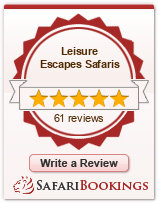
OVERVIEW
Kenya continues to impress and astonish even the most travelled of visitors. The incredible diversity of wildlife found in the Mara, Amboseli and the other parks in the country is what has made Kenya the destination for the classic safari for the last century. The herds of elephant, the masses of wildebeest and of course lion are just the starting point of any safari. Experience the culture of the traditional Maasai that live in Kenya’s national parks. Learn to make fire without matches, take a tour of a typical Maasai hut and test your jumping skills against Maasai warriors.
For the more adventurous, Africa abounds with extreme activities. Thrill-seekers will want to trek the slopes of Mt. Kenya, Africa’s 2nd highest mountain, as well as try out the white water rafting opportunities in the central part of the country. Those headed to the ocean will find the idyllic white-sand beaches of Mombasa and Lamu to be a soothing escape into a coastal paradise.
Main Attractions:
-
-
- Numerous species of wildlife and plants in the national parks and game reserves
- Ocean coasts and lake beaches
- Mountain treks from the very high Mt. Kenya to the volcanic Mt. Longonot
- Brilliant landscapes of the Rift Valley
- Prehistoric cultural and archaeological sites
- Culture and people
-
ABOUT KENYA
The Republic of Kenya, is a country in East Africa. Kenya’s territory lies on the equator and overlies the East African Rift covering a diverse and expansive terrain that extends roughly from Lake Victoria to Lake Turkana and further south-east to the Indian Ocean.
Kenya has a warm and humid tropical climate on its Indian Ocean coastline. The climate is cooler in the savannah grasslands around the capital city, Nairobi, and especially closer to Mount Kenya, which has snow permanently on its peaks. Further inland, in the west, there is a hot and dry climate which becomes humid around Lake Victoria, the largest tropical fresh-water lake in the world. The northern parts are also hot and dry, and has a semi desert-like terrain which get very green when it rains.
Kenya is a presidential republic and got its independence from Britain in 1963. It has gradually become the largest economy by GDP in East and Central Africa. It has 47 semi-autonomous counties governed by elected governors. The capital and largest city is Nairobi. The people of Kenya are from diverse cultures, 43 communities with different ethnicity and languages but united by the common languages (Swahili and English), cosmopolitan cities and towns, and common interests especially business and religion.
WHY KENYA
Kenya is traditionally famous for its safaris, diverse climate and geography, and expansive wildlife reserves and national parks such as the East and West Tsavo National Park, the Maasai Mara (where the wildebeest migration takes place), Amboseli National Park, Lake Nakuru National Park, Samburu National Park, Meru National Park and Aberdare National Park. Kenya has several world heritage sites such as Lamu and numerous world-famous beaches, including in Diani, Bamburi and Kilifi where international yachting competitions are held every year. The diverse communities engender a diverse culture, with one common feature across all the Kenyan cultures: Hospitality. Kenyans warmly welcome their peaceful visitors and give them preference regardless of the odds.
WHEN TO GO
January to mid-March is a good time to chase the sun. Beaches, adventure treks and cultural activities are available throughout the year, but June to October is dry season and the best time to visit for wildlife viewing opportunities. The wildebeest migration from Tanzania starts in July and is a wonderful experience which ends in October.
WHERE TO GO
-
- Kenya’s National Parks and Game Reserves
Kenya has 23 National Parks, 15 National Reserves and 7 Marine Parks/Reserves.
The main attractions in some of them are:
MAASAI MARA
The Mara is the most famous park in Kenya with over 450 types of birds and 95 species of animals, including all of the Big 5. The Great Migration of wildebeest and zebra occurs here annually from July to September.
AMBOSELI
Resting at the foothills of Mt. Kilimanjaro, Amboseli contains 2 swamps nestled in the midst of this vast arid grassland. African elephants are plentiful and the sparse vegetation provides excellent opportunities for viewing the buffalo, impala, lion, cheetah, hyena, giraffes, zebra, and wildebeest in Amboseli.
LAKE NAKURU
The lake’s naturally occurring algae attracts more than 2 million flamingos to the shores of Lake Nakuru along with over 400 other species of bird. Zebra, impala, gazelle, lion, leopard, hyena, hippo, buffalo and white rhino are common along with the 30 endangered Rothschild giraffe.
MT KENYA
Mt Kenya stands as the highest mountain in Kenya at 5,199 meters (17,057 ft). Most visitors ascend to Point Lenana at 4,985 meters (16,355 ft), beyond which requires technical climbing. The Mt Kenya National Park is home to elephant, bushbuck, eland, rhino, leopard and waterbuck.
SAMBURU
This collection of 3 parks (Samburu, Shaba and Buffalo Springs National Reserves) attracts a diverse array of animals to its permanent supply of water. Leopards are more common here than anywhere else in Kenya. Lion, cheetah, elephant, buffalo and hippo live here along with rarer Beisa Oryx, reticulated giraffe and more than 350 species of bird.
ABERDARE
The park’s streams, rivers, and waterfalls are surrounded by mountain tops. Great hunters like the lion, leopard and African hunting dog live in this less travelled park, attracted by the Cape buffalo, waterbuck, eland, elephant and baboon. The waterholes in the park provide for excellent wildlife viewing at night.
SWEETWATERS
View some 36 orphaned chimps while boating through the Chimpanzee Sanctuary located here. Positioned between the slopes of Mt Kenya and Aberdare, Sweetwaters affords the opportunity to see lion, elephant, white and black rhino, cheetah and even Max, the park’s tame rhino.
TSAVO NATIONAL PARK
Tsavo national park is one of the oldest national parks in Kenya which is located in the south-eastern part of the country and it is made up of Tsavo west national park and Tsavo east national park which are separated by a railway line. Famous for man-eating lions, Tsavo national park also consist of a rugged landscape which is also made up of mountains as well as wooded grasslands in Tsavo west national park. In contrast, Tsavo east national park is characterized by semiarid grasslands and savannah where wildlife species can be seen. The man-eating lions in Tsavo national park came to be known as above when two maneless lions attacked construction workers during the construction of the railway passing through the national park. These lions are among the attractions that tourists visiting this national park are interested in seeing as they explore the destination.
MERU NATIONAL PARK
Meru National Park is the location where the famous George and Joy Adamson raised the lioness named Elsa. The story was shared via the book and movie of which both were named Born Free. Wildlife is varied and plentiful. Some of the more common species include elephant, giraffe, black rhino, white rhino, kudu, gazelle, hartebeest, reedbuck, zebra, and hippo. Each of the above-referenced rivers is highly populated with hippopotamuses. Predator species include lion, leopard, cheetah, jackal, African wild cat, and hyena.
-
- Beach Locations
Kenya has 1,420 kilometres of coastline. It’s a melting pot of culture, beauty and full of holiday spots for your pleasure. Here are some of the areas:
DIANI
With swaying palms and soft, white sand caressed by glittering, turquoise water, Diani Beach has many of the ingredients of the perfect tropical holiday destination. It is deservedly popular, and as one of Kenya’s premier Indian Ocean resorts, it has a large and still-growing assortment of hotels and restaurants, some of them extremely luxurious by local standards. It is also one of the best places to get eye to eye with the richly diverse marine life of the southern Kenyan coast, by snorkelling, scuba-diving or joining a boat safari. The beach is the area’s major attraction – long, soft, white and lovely, it comes close to the tropical ideal. The romantically inclined can cruise the shoreline in a dhow (traditional boat).
LAMU
Kenya’s oldest town and once a centre for the slave trade out of East Africa, Lamu is a coastal paradise with a fascinating history. The winding streets, classic Swahili tradition, and wooden dhows that dot the coastline give the city an intimate feel where centuries seem to collide. Relax in the surf or under a coconut tree on Lamu’s white sand beaches. The resorts here provide world-class amenities in an otherwise quaint little town.
MOMBASA
This coastal paradise is located south of Lamu and provides a more modern look than Lamu. Scuba diving, windsurfing, water sports and more can be found on both the north and south coast of Mombasa. The white-sand beaches and crystal-clear blue water of Mombasa’s south coast attracts visitors looking for a relaxing holiday by the beach. The north coast is much closer to the city and provides top-class accommodations as well as pristine beaches.





